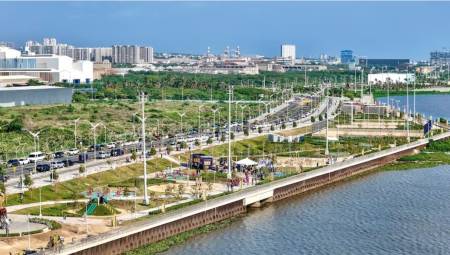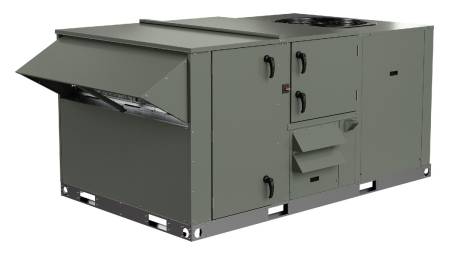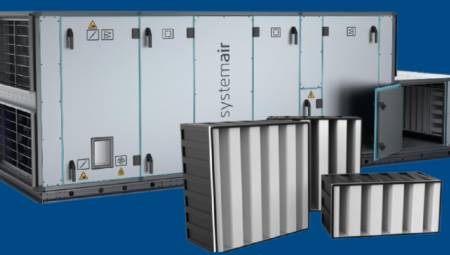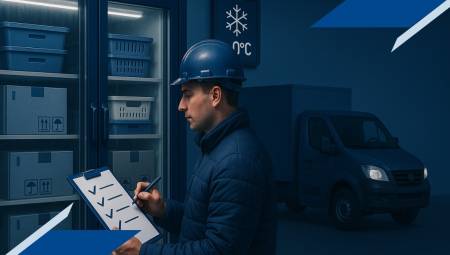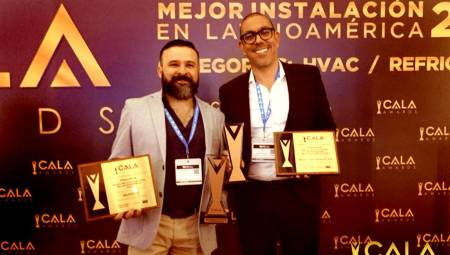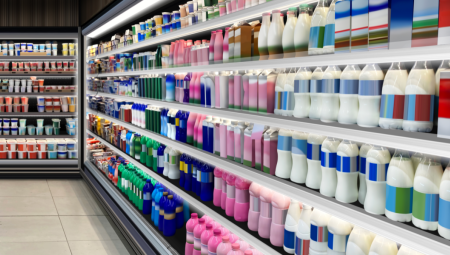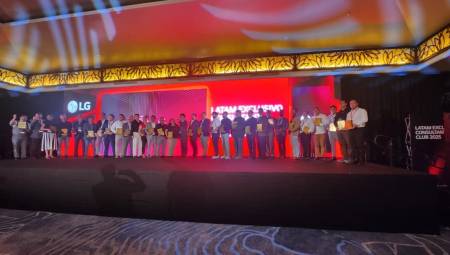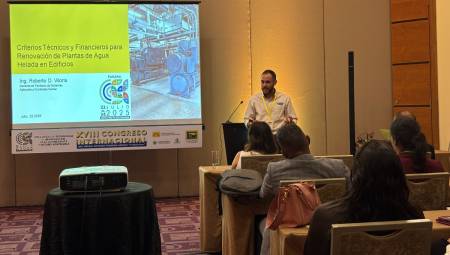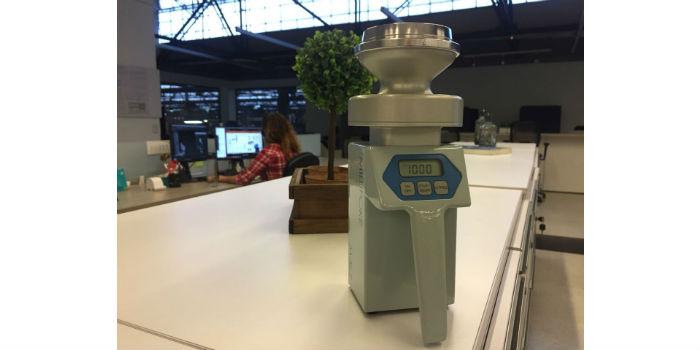 Let's know the characteristics and technical benefits of a new technology in air purification equipment.
Let's know the characteristics and technical benefits of a new technology in air purification equipment.
by Julián A. Restrepo R. and José Paulo Naranjo*
In the first part of this article, some aspects of poor air quality, sick building syndrome and health-associated infections were highlighted. Facts that motivate us to find solutions that reduce these risks and make the air that circulates in a certain space more efficient. In this second part we will know an interesting option for these requirements.
The importance of clean indoor spaces: In the case of Colombia, it is reported that 80% of cities are located in climates that require the use of air conditioning systems, since the average ambient temperature exceeds 28°C, almost all year round [8]. Thus, the use of air conditioning has ceased to be a luxury and has become an indicator of quality of life for people.
In this context, it is considered that the population most benefited from the use of air purification equipment would be:
Common interior spaces
For places that present a high occupancy or high traffic of people, or that demand the care and control of the air quality in their different areas (health, entertainment, offices, industrial, commercial, etc.).
Designers of air conditioning equipment, which seek to offer a value offer by reducing the consumption of outdoor air (opted for energy efficiency), through the use of efficient air purification systems.
Entities providing health or related services (laboratories, beauty centers, spas, etc.), which must guarantee the safety of their interior spaces and the reduction of the risk of contagion and proliferation of infectious diseases.
Industrial and Commercial Sector
Perishable products (processed or unprocessed foods) or sensitive to contamination (drugs, vaccines), whether biological or environmental, where high indoor air quality is required to guarantee the safety of the products sold, regardless of the geographical area where it is located.
- Companies concerned about the presence of pollutants and their impact on productivity and people's health
- Companies that seek to give added value to the shopping experience of their customers through the improvement of the air quality of indoor spaces: reduction and elimination of bad odors, air pollutants, microbiological risks, etc. Some examples are in: Health and Wellness Services. Clinics, hospitals, white areas (such as operating rooms), clinical and chemical analysis laboratories, offices, dental centers, veterinary centers, spas, gyms. Entertainment centers: Hotels, theaters, movie theaters, performance halls, theaters. Commercial Services: commercial areas such as shops, shopping centers, supermarkets, department stores, customer service areas, airports, public transport stations (metro, taxis, buses), closed public areas. Productive and Industrial Sector: Office areas, banks, high occupancy offices, food or drug production areas. Housing and homes: Houses or suitable with ventilation or air conditioning systems, etc.
Oxidative Treatment Units (UTO): An innovative solution for the pollution of indoor environments
The technology of Oxidative Treatment Units (UTO), is based on the use of the principles of photocatalysis, which, technically, refers to a catalytic reaction that involves the absorption of light by a catalyst or substrate, to generate highly oxidizing and reactive free radicals. Photocatalysis is one of the variants of advanced oxidation processes (PAOs), which are particularly interesting for water and air treatment due to their efficiency in neutralizing a wide variety of contaminants due to the generation of highly reactive hydroxyl radicals.
Among PAOs, photocatalysis, mainly that which uses titanium dioxide (TiO2) as a photocatalyst, has been studied extensively in recent years. This new technology is considered today as a competitor to classical purification techniques (see Figure 2, for the different applications of Photocatalysis).
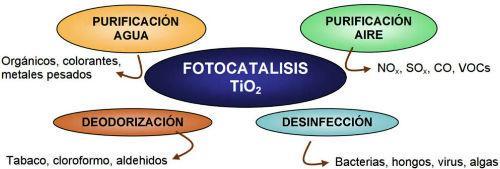
Figure 2: Different applications of photocatalysis for water and air purification, including deodorization and disinfection process (Source: El Confidencial) [9]
There are several terms that involve photocatalysis as a technology for air purification, many of them intimately related: Oxidative Treatment Unit (UTO), Photocatalytic Oxidation Air Treatment (OFC), Advanced Oxidation Processes (PAO), Advanced Ionization Processes (PIA), among others.
Oxidative Treatment Units (OTUs), emerge, therefore, as a viable, proven, efficient, safe and comparatively more economical technology, which helps to reduce the risks associated with indoor air quality, effectively For this reason, various scientific studies and patents associated with the study of photocatalysis can be found in the literature [10]. Figure 3, for example, shows that, in the last 10 years, the scientific publications associated with the topic of photocatalysis have increased by 403% compared to 2007.
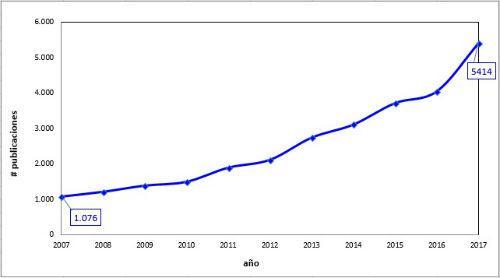
Figure 3: Evolution of scientific publications, using the term "photocatalysis" (years 2007-2017) (Source: ScienceDirect) [11]
The main advantages associated with the use of purification equipment based on photocatalysis are:
1. Immediate and obvious advantages for people's health:
- Reduction of aerobic diseases and exposure to hazardous air pollutants: Volatile Organic Compounds (VOCs), Hazardous Air Pollutants (PAHs) and related.
- They eliminate up to 99% of allergenic substances (allergens), which cause the vast majority of allergies we know! Oxidative Treatment Units (UTO) significantly reduce the presence of pollen spores, fungi and molds, pet dander, dust mites, insect secretions, as well as other allergens present in the air.
- They eliminate up to 99% of the presence of unpleasant odors, providing environments with clean and fresh air! Oxidative Treatment Units (OTUs) can eliminate VOCs that cause unpleasant odors in the home. Many VOCs are considered hazardous air pollutants (PAHs), due to their health risks, toxicity and possible carcinogenicity.
- They eliminate up to 99% of fungi, molds, yeasts and various microorganisms. In several studies, the efficiency of oxidative treatment units (OTUs) has been demonstrated, for the reduction of the presence of microorganisms present in the air.
- They eliminate up to 99% of pathogenic germs and bacteria, which cause many diseases, providing a healthy and pathogen-free indoor environment! Oxidative Treatment Units (UTO) emit specific ultraviolet UV light radiations that are very effective in eliminating germs present in the air.
2. Appreciable energy savings:
- The Oxidative Treatment Units (UTO), optimally allow a greater recirculation of air to the interior, reducing the intake of outdoor air and, therefore, lowering the energy requirement of operation of air conditioning systems.
- Efficient energy consumption. This is based on the fact that oxidative Treatment Units (OTUs) have a lower energy consumption compared to other air purification technologies.
3. Reduced maintenance costs:
- They do not require the use of filters, maintenance schemes or associated continuous spare parts!
- The Oxidative Treatment Units (UTO), have functional designs allowing them to have a reduced maintenance scheme, practically negligible. Its only consumable is the photocatalytic cell, which has a useful life of 2 years, with viable costs.
4. Advanced technology in purification:
- It has comparative advantages with other technologies, since it is considered a novel, highly effective and safe technology to remove the most abundant and toxic pollutants from the air.
- The Oxidative Treatment Units (UTO), have a UV-sensitive photocatalytic coating with metal nanoparticles (MNPs) and photoactivable compounds that create an Advanced Ionization Process (PIA), which generates very reactive ionized oxidants, which purify the air very quickly, very efficiently and safely.
- Purifying effect of long range and in little space. Usually the Oxidative Treatment Units (UTO), occupy little space and their purifying action manages to reach large volumes of air.
- Some Oxidative Treatment Units (UTO) have intelligent alerts (based on electronic systems): Indicators of cell life, indicators of failures and the correct functioning of the equipment.
- Because of their design and size, they are easy to implement in existing air conditioning systems (see Figure 4).
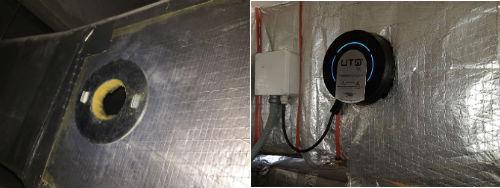
Figure 4: Left: Perforated air conditioning duct, prior to the installation of an Oxidative Treatment Unit (UTO); Right: Oxidative Treatment Unit (UTO), installed and in operation
5. Environmental advantages:
- Reduction of the carbon footprint associated with air purification. Oxidative Treatment Units (UTO), due to their low energy consumption and the fact that they allow to reduce the amount of air to be purified, reduce the carbon footprint compared to other air purification equipment.
- Treatment units emit a very low amount of substances that, despite being short-lived, are highly reactive allowing them to react with air pollutants without causing harmful effects on people.
* Julián A. Restrepo R.- Research and Development - [email protected]
* José Paulo Naranjo - General Manager - [email protected]
Pure Environments - www.ambientespuros.com - Medellin, Colombia.
References
[8] https://www.dinero.com/empresas/articulo/negocio-de-aire-acondicionado-en-colombia/232018
[9] https://www.elconfidencial.com/tecnologia/2014-09-12/fotocatalisis-o-como-la-pintura-de-las-paredes-puede-eliminar-la-contaminacion_191062/
[10] https://blog.condorchem.com/fotocatalisis-tratamiento-covs/
[11] Source: ScienceDirect, https://www.sciencedirect.com/




